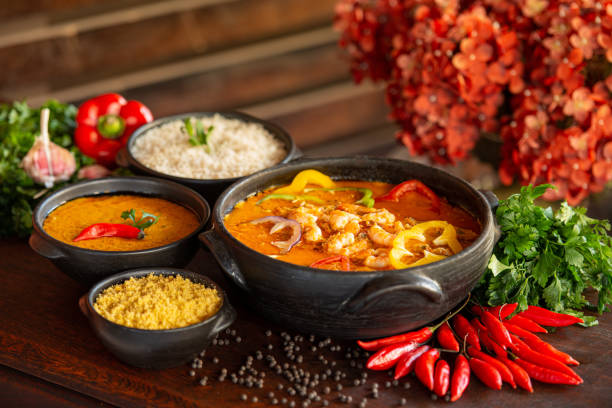Introduction: Brazilian cuisine
Brazilian cuisine is a fusion of cultures, reflecting the country’s diverse history and geography. The cuisine is a blend of indigenous, European, and African cultures, resulting in a rich and varied culinary experience. Brazil is the largest country in South America, and its cuisine is diverse and influenced by the country’s vast landscape, from the Amazon rainforest to the beaches of Rio de Janeiro.
The influence of indigenous cultures
Indigenous cultures have played a significant role in Brazilian cuisine. The native peoples of Brazil have used a variety of cooking techniques, including grilling, smoking, and boiling, to prepare their food. These methods have been incorporated into Brazilian cooking, and dishes such as churrasco (barbecue) and feijoada (a stew made with beans and meat) are popular throughout the country.
The role of Portuguese colonization
Portuguese colonization also had a significant impact on Brazilian cuisine. The Portuguese introduced a variety of ingredients, including wheat, sugar, and dairy products, which have become staples in Brazilian cooking. One of the most popular dishes in Brazil is the pastel, a pastry filled with savory or sweet ingredients, which is believed to have been introduced by the Portuguese.
African influences on Brazilian cooking
The African influence on Brazilian cuisine is evident in dishes such as acarajé, a deep-fried bean cake, and vatapá, a stew made with shrimp and coconut milk. African slaves brought to Brazil also introduced a variety of spices, which are used to flavor many traditional Brazilian dishes.
The use of tropical fruits and vegetables
Brazil’s tropical climate has led to the use of a variety of fruits and vegetables in Brazilian cuisine. Some of the most popular fruits include guava, passion fruit, and mango, which are used in desserts and drinks. Vegetables such as cassava and yucca are used to make flour, which is used in a variety of dishes.
Brazilian meat and seafood traditions
Brazil is known for its meat and seafood dishes, including churrasco, a type of barbecue, and moqueca, a seafood stew. The country is a major producer of beef, and the meat is typically seasoned with salt and grilled over an open flame. Seafood is also popular, with many traditional dishes featuring shrimp, fish, and crab.
The importance of seasonings and spices
Seasonings and spices are an essential part of Brazilian cuisine. Many dishes are flavored with garlic, onions, and peppers, while spices such as cumin, coriander, and paprika are also commonly used. The use of fresh herbs such as parsley, cilantro, and mint add a fresh, aromatic flavor to many Brazilian dishes.
Conclusion: the diversity of Brazilian cuisine
Brazilian cuisine is a diverse and flavorful mix of indigenous, European, and African cultures. The country’s vast landscape and tropical climate have led to the use of a variety of fruits and vegetables, meats, and seafood. The use of seasonings and spices adds depth and complexity to many traditional dishes, making Brazilian cuisine a culinary experience not to be missed.

